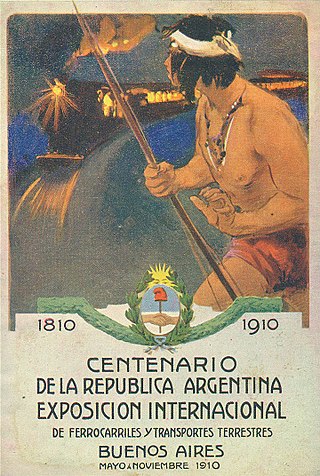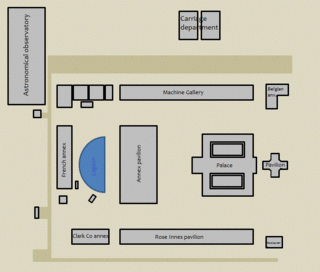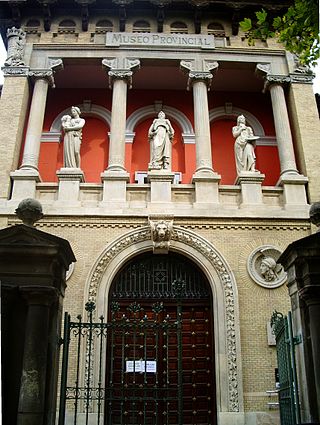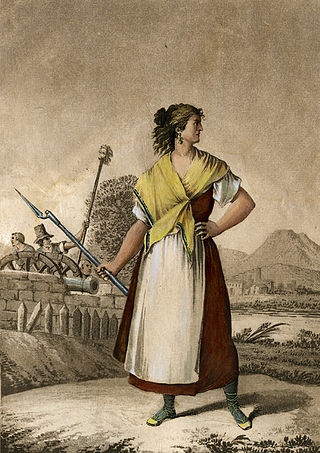


The Hispano-French Exposition was an exposition held in Zaragoza from May to December 1908 to commemorate the hundred-year anniversary of the first siege of Zaragoza.



The Hispano-French Exposition was an exposition held in Zaragoza from May to December 1908 to commemorate the hundred-year anniversary of the first siege of Zaragoza.
In 1902, the city of Zaragoza decided to celebrate the first centennial of the siege, and to make the celebration a regular event. The Commemorative Committee of the Siege (Junta Conmemorativa de los Sitios) was formed. An industrial exposition was planned, but its magnitude was uncertain due to the lack of funds.
In 1906, the national government decided to provide 2.5 million pesetas to finance the exposition, whereupon the executive committee of the Exposition was established, headed by Basilio Paraíso, a local businessman. Paraiso organized the commemoration of the centenary and the Exposition, placing Ricardo Magdalena in charge of the planning. The exposition was regarded as a modern event, with the purpose of demonstrating the cultural and economic vitality of the city and of Aragon, while at the same time serving to strengthen Spanish ties with their French neighbors, and continue to improve diplomatic relations following the events of the Peninsular War of the previous century.
Even so, not everything was done entirely according to Paraiso's taste. Conservative elements such as Florencio Jardiel, the president of the organizational committee of the centenary, also had their say in the organization and in the execution of the event. Jardiel's mark could be seen in the importance of the Marine Pavilion and in the results of the National Pedagogical Congress of Zaragoza.
The land used for the Exposition was the so-called Huerta de Santa Engracia, surrounding the current Plaza de los Sitios. 36,500 workers were hired to work on the projects of Ricardo Magdalena and other architects. Magdalena designed the most important buildings; among those that he was responsible for were the present-day Museo Provincial de Zaragoza, an enormous Neo-Renaissance palace inspired by the Aragonese palaces of the 16th century, and the Gran Casino, a modernist building that existed until 1930. The younger architects were in charge of the other buildings. Félix Navarro was responsible for the Escuela de Artes y Oficios which is still standing, in the Plaza de los Sitios. In the center of the Plaza was erected the Monumento a los Sitios by Agustí Querol Subirats, a Catalan sculptor who executed it in a modernist style; it still can be seen today.
The majority of the buildings were modernist and of a temporary nature, constructed with inexpensive materials such as wood, plaster and adobe, and torn down after the Exposition. Among those razed were the Theater, the Entrance Gate, the Food Pavilion, the Marian Pavilion, and the Central Pavilion, or French Pavilion, in a neo-Rococo style, which thrilled the visitors with a section dedicated to the French automobile industry.
More than 5,000 exhibitors participated, the most-visited being those involved in agriculture, food, mechanical industries, and manufactured products. In addition one could see exhibits related to crafts, sanitation, and chemical and pharmaceutical products. Among the exhibitors were both public institutions such as the French government and the Ministry of Development, and private businesses such as Altos Hornos de Vizcaya, which had its own pavilion. Catalonia also had a significant presence (there was a small incident during a toast to the regional architect Josep Puig i Cadafalch that did not please some conservative Zaragozans).
The exposition coincided with several other congresses, which included the Science, National Agriculture, Chamber of Commerce, Exports, Economic and Tourism Society. There was also the great Artistic Exposition of contemporary art and arte retrospectivo, that is, art of the past.
The public success, with more than half a million visitors, caused the event to be extended by two months. Among the notable visitors was King Alfonso XIII, who visited the Exposition on several occasions.
Zaragoza hosted another Exposition, Expo 2008, which coincided with the bicentenary of the siege, with the intent of turning this into a centennial event.

The Exposition Universelle of 1900, better known in English as the 1900 Paris Exposition, was a world's fair held in Paris, France, from 14 April to 12 November 1900, to celebrate the achievements of the past century and to accelerate development into the next. It was the sixth of ten major expositions held in the city between 1855 and 1937. It was held at the esplanade of Les Invalides, the Champ de Mars, the Trocadéro and at the banks of the Seine between them, with an additional section in the Bois de Vincennes, and it was visited by more than fifty million people. Many international congresses and other events were held within the framework of the exposition, including the 1900 Summer Olympics.

The Ibero-American Exposition of 1929 was a world's fair held in Seville, Spain, from 9 May 1929 until 21 June 1930. Countries in attendance of the exposition included: Portugal, the United States, Brazil, Uruguay, Mexico, Peru, Argentina, Chile, Colombia, Cuba, Venezuela, the Dominican Republic, Bolivia, Panama, El Salvador, Costa Rica, and Ecuador. Each Spanish region and each of the provinces of Andalusia were also represented.

The Exposition Universelle of 1889, better known in English as the 1889 Paris Exposition, was a world's fair held in Paris, France, from 6 May to 31 October 1889. It was the fifth of ten major expositions held in the city between 1855 and 1937. It attracted more than thirty-two million visitors. The most famous structure created for the exposition, and still remaining, is the Eiffel Tower.
Expo 2008 was an international exposition held from Saturday 14 June to Sunday 14 September 2008 in Zaragoza, Spain, with the theme of "Water and Sustainable Development". The exposition was placed in a meander of the river Ebro. It was coordinated by the Bureau International des Expositions, the organization responsible for sanctioning World's Fairs.

The International Exhibition of Modern Decorative and Industrial Arts was a specialized exhibition held in Paris, France, from April to October 1925. It was designed by the French government to highlight the new modern style of architecture, interior decoration, furniture, glass, jewelry and other decorative arts in Europe and throughout the world. Many ideas of the international avant-garde in the fields of architecture and applied arts were presented for the first time at the exposition. The event took place between the esplanade of Les Invalides and the entrances of the Grand Palais and Petit Palais, and on both banks of the Seine. There were 15,000 exhibitors from twenty different countries, and it was visited by sixteen million people during its seven-month run. The modern style presented at the exposition later became known as "Art Deco", after the exposition's name.

Basilio Paraíso was an Aragonese businessman and politician.

The Exposition Universelle of 1867, better known in English as the 1867 Paris Exposition, was a world's fair held in Paris, France, from 1 April to 3 November 1867. It was the second of ten major expositions held in the city between 1855 and 1937. A number of nations were represented at the fair. Following a decree of Emperor Napoleon III, the exposition was prepared as early as 1864, in the midst of the renovation of Paris, marking the culmination of the Second French Empire. Visitors included Tsar Alexander II of Russia, a brother of the King William and Otto von Bismarck of Prussia, Prince Metternich and Franz Josef of Austria, Ottoman Sultan Abdülaziz, and the Khedive of Egypt Isma'il.

The Exposición Internacional del Centenario was an exhibition held between May and November 1910 in Buenos Aires, to commemorate the Centennial of the May Revolution in Argentina. With a population of around 1.2 million, Buenos Aires was then the largest urban complex in Latin America, the eighth city in the world, and one of the richest. As the capital city and main port of the young Argentine Republic at the height of its economic expansion, the city was growing rapidly with the successive waves of European immigration.

Agustí Querol i Subirats was a prominent Spanish sculptor, born in Tortosa, Catalonia, Spain.

The 1929 Barcelona International Exposition (also 1929 Barcelona Universal Exposition, or Expo 1929, officially in Spanish: Exposición Internacional de Barcelona 1929 was the second World Fair to be held in Barcelona, the first one being in 1888. It took place from 20 May 1929 to 15 January 1930 in Barcelona, Spain. It was held on Montjuïc, the hill overlooking the harbor, southwest of the city center, and covered an area of 118 hectares at an estimated cost of 130 million pesetas. Twenty European nations participated in the fair, including Germany, Britain, Belgium, Denmark, France, Hungary, Italy, Norway, Romania and Switzerland. In addition, private organizations from the United States and Japan participated. Hispanic American countries as well as Brazil, Portugal and the United States were represented in the Ibero-American section in Sevilla.
Events in the year 1908 in Spain.

Eugène Adolphe Henri Georges Wybo was a French architect who is known for the casino and the Hôtel Royal in Deauville, and for the department stores that he built for the Printemps chain.

The Chilean International Exhibition was a world's fair held in Quinta Normal Park, Santiago, between 16 September 1875 and 16 January 1876 to show Chilean people recent technological and scientific advances.

Aníbal González Álvarez-Ossorio was a Spanish architect who made important buildings in Seville and Madrid. At the beginning of his career his style was Art Deco, but later evolved towards regionalism. He designed the Plaza de España and he was the chief architect of the Ibero-American Exposition of 1929 in Seville.

Luis Lacasa Navarro was a Spanish architect. His work in Spain and Paris before and during the Spanish Civil War (1936–39) was rationalist and functional. He is best known as co-designer of the Spanish Pavilion at the 1937 Paris Exposition, a work designed to showcase the modern legitimacy of the embattled Spanish Republic. After the war he went into exile in the Soviet Union.
Juliana Josefa Benita Larena Fenollé was a nurse. She was involved in the Sieges of Zaragoza during the Peninsular War.

Zaragoza Museum is a national museum in the Plaza de los Sitios in the city of Zaragoza in Spain. Its collections range from the Lower Palaeolithic to the modern era and include archaeology, fine arts, ethnology and Iberian ceramics.

Casta Álvarez Barceló was an Aragonese insurgent, who fought in the First siege of Zaragoza. This took place during the 1808 to 1814 Spanish War of Independence, or Guerra de la Independencia Española, part of the Peninsular War. She is known for inspiring the defenders of the city by single-handedly defeating an advancing French cavalry troop. Her story was popularised in a series of engravings entitled Ruinas de Zaragoza published in 1812 and 1813. For her actions, she received a pension from Ferdinand VII of Spain and, at the centenary of the siege, her body was reinterred with honour.

Agustina Zaragoza y las Heroínas or the Monument to Agustina de Aragón is an instance of public art in Zaragoza, Spain. Designed by Mariano Benlliure, it consists of a bronze statue of Agustina de Aragón topping off a stone pedestal that displays two other sculptural groups and a number of reliefs. The latter subsidiarily pay homage to another six heroines of the Zaragozan theatre of the Peninsular War.

The Royal Pavilion of Spain was the exhibition national pavilion of the Kingdom of Spain at the 1900 Paris Universal Exposition. It was a temporary building by architect José Urioste Velada in Neo-Plateresque style located on the Quai d'Orsay. It housed a Retrospective Exhibition of Spanish Art, the Royal Office of the Spanish Commissioner at the Fair and the first restaurant in History with a completely electric kitchen.
This article includes a list of references, related reading, or external links, but its sources remain unclear because it lacks inline citations .(June 2024) |